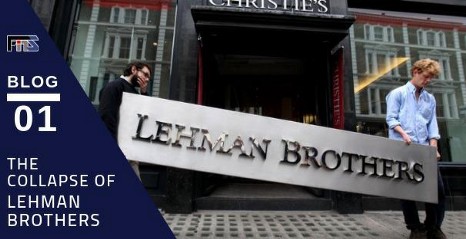Contents
Price stabilisation benefits retail investors during volatile share price fluctuations. It also provides them with an exit window in case they are not comfortable with the volatile prices. If the IPO documentation says that the company has a greenshoe option agreement with its underwriter, such investors can be confident that the share price of the company will not fall far below the offer price. When the demand for a company’s shares increases or decreases, overallotment can also be utilized as a price stabilisation tactic. The underwriters incur a loss when the share prices fall below the offer price, so they may purchase the shares at a lower price to keep them stable.
The underwriter does not exercise the greenshoe shares option and buys the stock back at Rs. 8. The guidelines require the promoter to lend his shares (not more than 15% of issue size) which is to be used for price stabilisation to be carried out by a stabilising agent on behalf of the company. Statements of the issuer have been disclosed in the offer document. Directors of the promoters, where the promoter is a body corporate.

Obtained for the initial public offer of specified securities. Directors or key management personnel of the issuer or the group companies. So, if the stock price rises, underwriters buy extra stock from the company—up to 15%— and sell it to the public at a profit.
Details
IPOs are an excellent method for investors to acquire high-quality equities, and the market pays close attention to them. Before an IPO, a firm releases an offer document outlining the offering’s terms and conditions. The offer document informs the knowledgeable investor on a variety of aspects such as the company’s corporate subsidiary structure, risk factors, the company’s aims and strengths, and so on. But first, it is important to understand the role of an underwriter. When a company intends to launch an initial public offering , it hires the services of an underwriter–which is an entity, bank, or group of banks or brokerage agencies. As they work on a percentage basis, underwriters expect IPOs to raise as much capital as possible.
- Name, business experience, functions and areas of experience in the issuer.
- By doing so, underwriters settle their account in the market with no profit or loss.
- Green shoe option enables the underwriters to buy back up to 15% of the shares so that the market price on listing does not go below its offer price.
Most public investors have no clue about the impact of the overallotment of shares in the economy. The revenues generated from the exercising this option are used to secure the share of the issue price in case the market declines. The option increases the role of investment bankers enabling them to protect small investors by price stabilisation in case the market price falls below the offer price. https://1investing.in/ is a kind of option which is primarily used at the time of IPO or listing of any stock to ensure a successful opening price. Any company when decides to go public generally prefers the IPO route, which it does with the help of big investment bankers also called underwriters.
The content of this site is copyright-protected and is the property of H & M Hennes & Mauritz AB. H&M’s business concept is to offer fashion and quality at the best price in a sustainable way. H&M has since it was founded in 1947 grown into one of the world’s leading fashion companies. One standard financial unit shall be used in the offer document. Equity ratios before and after the issue is made shall be incorporated. Of Chartered Accountants of India shall be incorporated in the offer document. Which extensive details have been given in the offer document.
Open your FREE Demat Account in 5 Minutes
We do not sell or rent your contact information to third parties. Please note that by submitting the above-mentioned details, you are authorizing us to Call/SMS you even though you may be registered under DND. To give you the full membership experience, we will process your personal data in accordance with the H&M’s Privacy Notice. Yes, email me offers, style updates, and special invites to sales and events.
The issuing company can only lend 15% shares out of the total offer size for the greenshoe option process. This is an undesirable outcome as it creates the perception that the company’s shares are not in demand, and can further lead to a fall in share price as the new buyers may want to offload the newly-bought shares to cut their losses. Companies such as Sahara Prime City, DB Realty, Lodha Developers and Ambience had opted for the green shoe option, which helped them stabilise share prices in the event of extreme volatility or prices moving below offer price. As said earlier, the entire process of a greenshoe option works on over-allotment of shares. For instance, a company plans to issue 1 lakh shares, but to use the greenshoe option; it actually issues 1.15 lakh shares, in which case the over-allotment would be 15,000 shares. Please note, the company does not issue any new shares for the over-allotment.
Under a green shoe option, the issuing company has the option to allocate additional equity shares up to a specified amount. Undoubtedly, this option can help investors, companies, and regulators by protecting everyone from the significant price fluctuations of newly listed shares. The reverse option is when the underwriter sells the extra shares back to the issuing company. They usually execute this option when the demand drops or to stabilise the price when it becomes volatile.
The nature of any family relationship between any of the directors. Justification for the price difference shall be given in the offer document. Underlying share in market at the time of grant of the option. Of registering the offer document with the Registrar of Companies. The book runner or syndicate members for each such category, indicating the percentage to be paid as margin by the investor at the time of bidding. Addresses of the underwriters and the amount underwritten by them.
By doing so, underwriters settle their account in the market with no profit or loss. However, such would not be the case if underwriters exercised this option and purchased additional shares at the initial offer price. The reason is that any loss sustained when the shares were trading below the offer price is balanced by the difference between the offer green shoe price and the current market price. Share prices may rise above the offer price due to increasing demand for a company’s shares. In this case, the underwriters cannot repurchase the shares at the current market price since they would suffer a loss. To benefit from the demand for a company’s shares, the underwriters may execute the greenshoe option.
Most Read News
Shall be provided in the statement of assets and liabilities. If the issuer is exempt from the requirements of promoters‘ contribution, the relevant provisions under which it is exempt. Addresses and e-mail addresses of the merchant bankers, co-managers, etc. The words “group companies”, wherever they occur, shall mean companies, firms, ventures, etc. promoted by the promoters of the issuer, irrespective of whether such entities are covered under section 370 of the Companies Act, 1956 or not. The stabilising agent shall submit a report to the stock exchange on a daily basis during the stabilisation period and a final report to the Board in the format specified in .

Before investing in an IPO, we go through the offer document of the company to know more about it. A listed company is legally bound to abide by commitments made in the document. Besides providing information about the company’s competitive strengths, industry regulation, corporate structure, main objects, subsidiary details, risk factors, etc, the offer document also mentions a technical word called “Green shoe optionâ€. Green shoe option enables the underwriters to buy back up to 15% of the shares so that the market price on listing does not go below its offer price. In case the price dips, these underwriters buy back shares from the public.
Sign in to read the full article
The term used in the IPO document for the greenshoe share option is usually “over-allotment option.” The greenshoe share option was introduced to the Indian markets by SEBI only in 2003. Green Shoe Option is a price stabilizing mechanism in which shares are issued in excess of the issue size, i.e. a maximum of 15%. Under the full greenshoe option, the underwriter exercises their option to repurchase the entire 15% shares from the company. They can weigh in on this option when they are unable to buy back any shares from the market. The full buyback of shares allows them to cover their short sale position.
Adani Enterprises FPO Details with Share Price and Issue Size
Usually, underwriters buy the stock at a pre-determined price. The Green-shoe Option, also referred to as the overallotment option, allows the underwriters to sell more shares than the initially agreed number within 30 days of issuing the IPO. While also serving as a tool for additional revenue generation for the company, the overallotment of shares stops falling stock prices and saves the company’s reputation. These underwriters ensured that the shares were sold and the money raised was sent to the company. For instance, due to the popularity and potential of the company, Facebook’s shares were in high demand when it issued its IPO in 2012. The company was able to meet the demand by raising additional funds through the overallotment of its shares.
The greenshoe option decreases the risk for a company offering new shares by letting the underwriter cover short positions if the share price falls without having to acquire shares if the price rises. As a result, the share price remains stable, benefiting issuing company. In case the shares are trading at a price lower than the offer price, the stabilising agent starts buying the shares by using the money lying in the separate bank account.
A green shoe option is nothing but a clause contained in the underwriting agreement of an IPO. This option permits the underwriters to buy up to an additional 15% of the shares at the offer price if public demand for the shares exceeds expectations and the share trades above its offering price. Green shoe option is also known as an over-allotment provision. The above option is primarily used at the time of IPO or listing of any stock to ensure a successful opening price. Accordingly, companies can intervene in the market to stabilise share prices during the first 30 days’ time window immediately after listing.























